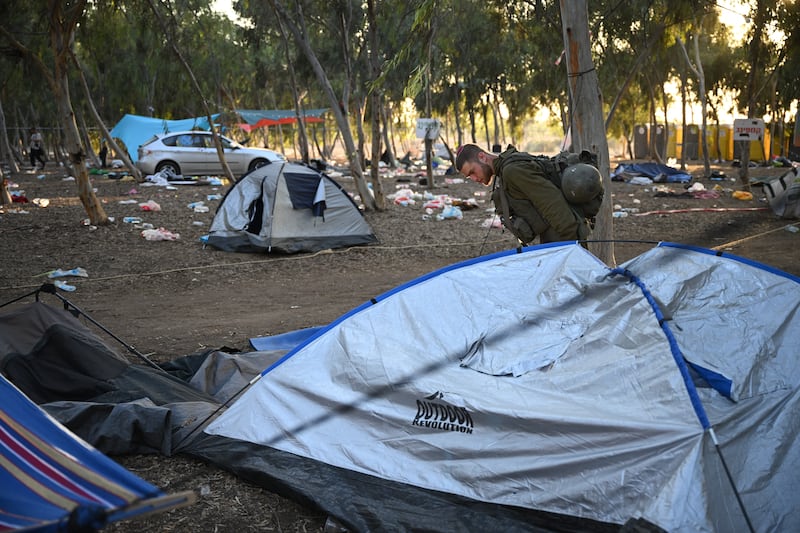Jason Burke, the highly regarded British journalist and author, has written a compelling new book that traces the history of international terrorism from the late 1960s to the early 1980s.
It is bookended by two acts of spectacular terror. The first, in September 1970, was the mass hijacking of Western airliners flown to a disused airfield in Jordan, where hundreds of hostages were held for several weeks. The most memorable images from the episode were of the three aircraft being blown up, mercifully empty. This was terror as theatre.
The second is the devastating truck bombing of the United States Marine Corps compound in Beirut in October 1983, carried out by a smiling jihadist. Two hundred and forty US Marines were killed, along with 58 French soldiers in a separate bombing. This was ruthless terror, red in tooth and claw. It marked the transition from mainly secular radical extremism to jihad.
The signature method of terrorism today is the suicide bombing. Back in the 1970s, it was skyjacking. The first method is always designed to cause mass casualties; the second, at least in its early iteration, was more performative and less bloody.
The Anthony Bourdain Reader: Part chain-smoking hero, part geeky mensch, firing breathlessly on all cylinders
Winter Papers & An Alternative Irish Christmas: An exquisite hardy annual and a wonderful gift
‘Very progressive’ Ireland celebrated as bust of Oscar Wilde is unveiled in Paris
Underwater photography: Every dive offers extraordinary encounters
The late 1960s saw international terrorism brought to the forefront of world affairs. Western radicals, disgusted by Vietnam, coalesced with Palestinians traumatised by the catastrophic Arab defeat to Israel in the 1967 Middle Eastern war.
An unlikely coalition emerged: the Japanese Red Army, the German Red Army Faction (Baader-Meinhof Gang), and the Venezuelan freelance gun-for-hire Ilich Ramírez Sánchez, also known as Carlos the Jackal, who allied themselves at various stages with different Palestinian offshoots such as the Popular Front for the Liberation of Palestine (PFLP), for whom hijacking was a calling card.
The thread of the book is the radical link with the Palestinian cause, hence the otherwise curious omission of Latin America, Italy and Ireland. The acts of terror were sometimes carried out with, and sometimes without, the imprimatur of mainstream leaders such as Yasser Arafat, head of the Palestine Liberation Organisation and Fatah. Fatah secretly established Black September, which carried out the massacre of Israeli athletes at the 1972 Munich Olympics and numerous other terror attacks before attempting to distance itself from terrorism.
The most famous acts of terror of the 1970s are here. Much of what unfolds will be familiar to those who have seen films and documentaries such as The Baader-Meinhof Complex, Munich, One Day in September and Entebbe. Indeed, while Burke adds plenty of depth and detail, images from those films filled my head as I read.
He prioritises telling the story rather than probing deeply behind the masks of his various protagonists, which makes for a compulsive read despite its length. The western terrorists combine nihilistic ruthlessness with an absurd radical chic. Both Andreas Baader and Carlos come across less as freedom fighters than as flamboyant idiots, and both are truly nasty pieces of work. Carlos killed without remorse while dressing and living like a character from The Persuaders, at home in a Yemeni terror training camp and on the Côte d’Azur.
[ Genocide in Gaza: three new books take stockOpens in new window ]
While one can sympathise with the cause, if not the methods, behind the Palestinians’ deployment of terrorism, there is little to recommend in these radicals who seem to have turned to violence as much out of boredom as conviction.
One striking detail Burke provides is how lax airport security was. Hijackers were able to board planes carrying guns and grenades in holdalls because airlines did not want to inconvenience their passengers. Some airports, Athens most notoriously, had all the security of a bus stop.
He also shows the contradictory public and private faces of western European governments when it came to terrorism. Publicly, they proclaimed a policy of “no negotiations with terrorists”, while privately they struck side deals and made concessions, including the release of prisoners. Indeed, many governments in the early 1970s were terrified of holding Palestinian terrorists in their jails, knowing that, as surely as night follows day, one of their airliners would soon be hijacked and the prisoners released – as happened in the aftermath of Munich.
The Israelis were characteristically more robust. Only in Israel could the first appearances of future prime ministers come from storming a hijacked plane (Binyamin Netanyahu) or leading a hit squad in Beirut (Ehud Barak) to kill Palestinian Black September leaders. Alleged Palestinian terrorist bases were bombed, though civilians, as usual, appear to have been the main victims.
The alliance between the Red Army Faction and the PFLP culminated in two hijackings that ended in disaster for both. Only in the 1970s could German radicals, whose raison d’être was anti-Nazism, see nothing wrong with separating Jewish passengers from Gentiles, as they did at Entebbe in Uganda. Israel, in a mission that still seems almost implausible, sent a force thousands of miles to Uganda, where Idi Amin was co-operating with the terrorists, rescued the hostages, and undeniably killed the “bad guys”. The only Israeli military fatality was Yoni Netanyahu, whose death became the springboard for the political rise of his brother Binyamin.
[ A Day in the Life of Abed Salama. A Palestine Story: Excavating the truthOpens in new window ]
A year later, a series of Red Army Faction attacks (assassinations, kidnappings) aimed at securing the release of Andreas Baader and other prisoners culminated in the hijacking of a Lufthansa plane. The resulting political crisis, known as the German Autumn, saw Helmut Schmidt’s government respond with vigour. At Mogadishu, German special forces successfully stormed the plane. In prison, Baader and his comrades killed themselves as their hopes of freedom evaporated. Carlos was finally captured in the early 1990s and now languishes in a French prison.
Palestinians have since claimed that the terrorism they deployed during the 1970s established Palestine as a recognisable nationalist cause. Yet then, as now, the consequences of these acts were often horrific. After the 1970 hijackings in Jordan, King Hussein crushed the Palestinian factions in what became known as Black September (5,000 dead).

Palestinian attacks on Israel drew ever more ruthless Israeli responses, culminating in the 1982 invasion of Lebanon. Christian militias took advantage of, at best, Israeli negligence and, at worst, acquiescence in the massacre of Palestinian women and children in the Sabra and Shatila refugee camps (possibly 2,000 dead). The Lebanon conflict, along with the Iranian Revolution and the Soviet-Afghan War, was one of the key incubators of Islamic terror.
The Hamas-orchestrated October 7th attacks of 2023 have brought further misery upon the heads of ordinary Palestinians as Netanyahu has pursued a ruthless war of revenge against Gaza (66,000 dead). The cause of Palestine is now well established, at least in part due to terrorism, but it seems no nearer to success. The cost has been immense, not least for the Palestinians themselves.
Robert McNamara teaches international history at Ulster University













